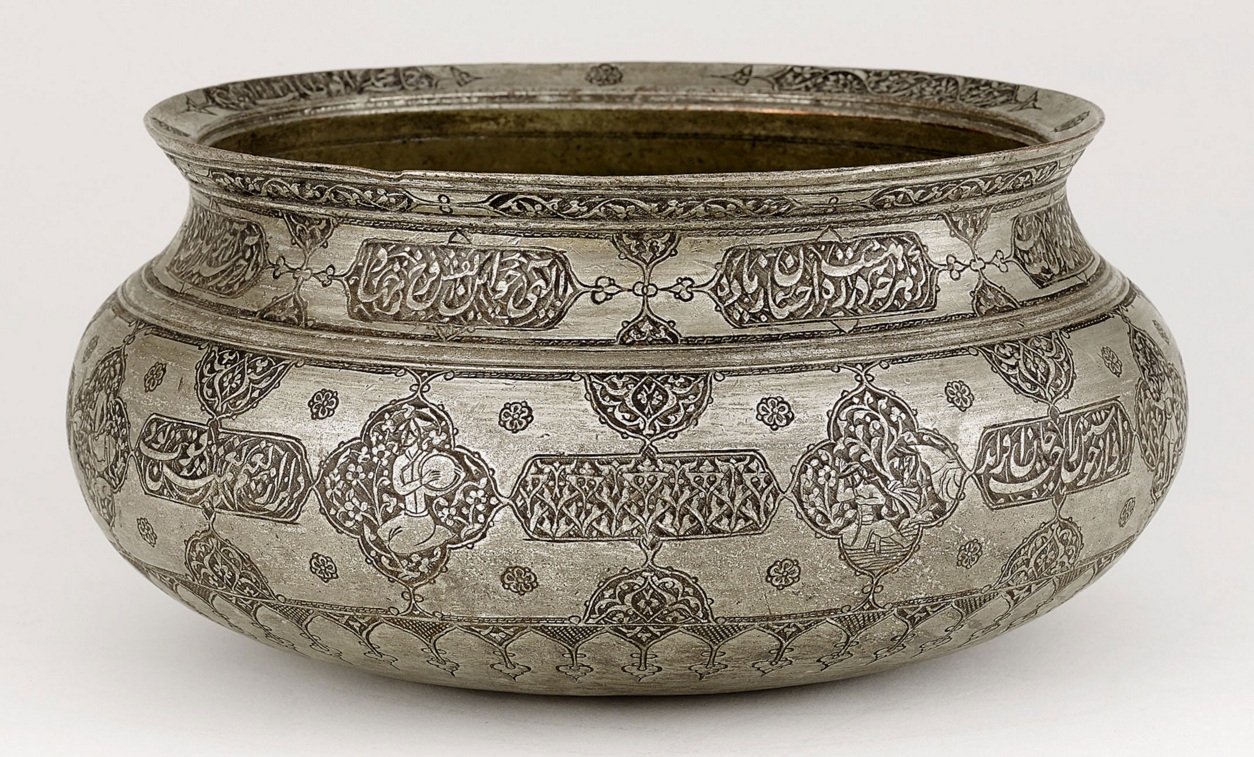A very fine Safavid tinned copper bowl which had been looted from the National Museum of Afghanistan in Kabul was presented to the Embassy of Afghanistan in London for return to Kabul.
The early 17th century bowl was lost during the A very fine Safavid tinned copper bowl which had been looted from the National Museum of Afghanistancivil war in Afghanistan in the 1990s. It was bought in good faith in December 1994 from an Afghan antique dealer in Jeddah (Saudi Arabia) by Patrick and Paola von Aulock who owned it for 20 years before deciding to sell it when they contacted Christie’s for a valuation.
The bowl was identified by Sara Plumbly, head of Christie’s Islamic Art department as being a piece from the museum in Kabul. Iranian art historian Souren Melikian-Chirvani had published the picture of the bowl in 1974 and had included it in his catalogue of Islamic Metalwork from the Iranian World (1982).
Christie’s gave permission for the bowl to be examined by the British Museum which confirmed the provenance and negotiations entered into with the current owners and the National Museum of Afghanistan, to return the bowl to Kabul.
The bowl’s return is all the more significant as much of the Islamic metal ware collection of the Afghan museum was lost during a devastating fire following a rocket strike on the museum in November 1995. The museum said the bowl will be put back on public display on its return, artdaily.com reported.
The bowl dates to the Safavid dynasty (1501–1722) in Persia and includes a cartouche which mentions the owner’s name and date: ‘Owned by Mohammad Abu Taleb 1013 [30 May 1604–18 May 1605]’
Three medallions depict scenes from the famous Persian tragic romance Khosrow and Shirin by the Persian poet Nizami Ganjavi (1141–1209) and the piece is sufficiently similar to another in the Musée de l’Homme in Paris that the two may come from the same workshop which was probably in the Afghan city of Herat.
The bowl was scientifically analyzed using surface X-ray fluorescence spectrometry which confirmed that it is largely of copper and the white metal plating is tinning. The decoration is engraved and finely executed. A black material has been applied to the engraved design, which although could not be firmly identified, is likely to be related to the organic black inlays seen on many brass bowls.
Fahim Rahimi, director of the Afghan museum said “I hope returning this bowl will be a start for more artifacts to be recovered, not only those looted from museums as well those looted from archaeological sites in Afghanistan. I ask those collectors who keep artifacts from Afghanistan to help us return them and encourage the auction houses to always check their collections for looted objects from Afghanistan.”


